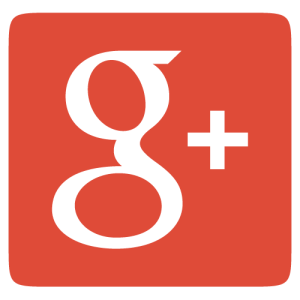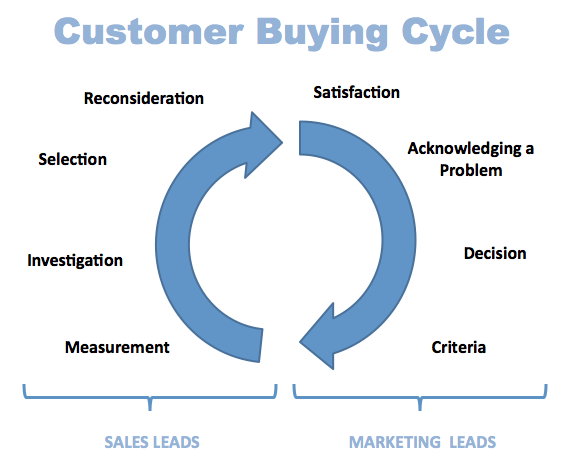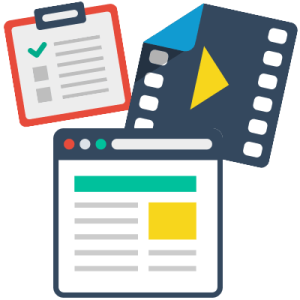by gabriel_sales | Dec 6, 2012
 Google+ is the newest player in the social networking game and by September 2012, it already had more than 400 million users. It is kind of like a highly organized Facebook that has ties to regular Google search.
Google+ is the newest player in the social networking game and by September 2012, it already had more than 400 million users. It is kind of like a highly organized Facebook that has ties to regular Google search.
This connection to regular Google search is what makes using Google+ for B2B marketing an asset. Here is how it works: if you post something to Google+, that post becomes automatically integrated into Google’s search engine. So, every post you make will show up in Google search results, but it will also effect future search results overall. Posts on Google+ related to your business can ultimately improve your SEO, which is something every B2B company can benefit from.
Here are some tips for effectively Using Google+ for B2B Marketing:
- Make a Business Page. Similar to Facebook, need to create a page designed for business, not a personal profile.
- Invite You Customers. Send out an invite to all of your existing customers inviting them to become your friend on Google+. You can do this through email, or via Facebook or Twitter; you should probably do all three.
- Add Content. Similar to Facebook, you want to give your readers something to look at besides words. This means you should upload your photos from Facebook and you videos from YouTube to Google+.
- Create ‘Circles’. Google+ allows you to make groups of friends, called circles, based on similar interests, topics, etc. When you create a circle, you can send posts only to the people within that circle. This allows for an excellent opportunity to use audience segmentation and create specific messages for people based on a variety of factors like geographic location, company size or industry.
- Post Consistently About Topics of Interest. Like Facebook and Twitter, Google+ requires you to post regularly if you want to stay relevant. Speaking of relevant, your posts should also be of interest interesting to the people following you. Do not post anything and everything that comes to mind; first make sure your idea is something worthwhile for your readers.
- Host Video Chats. Similar to Skype, Google+ allows you to host or participate in video chats including many people at the same time. You can use this feature to your advantage by hosting chats about frequently asked questions or a new product or service.
by gabriel_sales | Dec 4, 2012

Unlike Facebook and Google+, which are used by both individuals and businesses, LinkedIn is built primarily for business professionals. The people who use LinkedIn are generally older and more affluent than those on Facebook or Twitter and are using the site primarily for business connections. For these reasons, LinkedIn is extremely important for B2B sales and marketing.
Here are some tips on using LinkedIn effectively for B2B marketing:
- Create a Page for Your Company. Like Facebook, your page is the platform from which you do all of your communication. You cannot get around having one if you want to be successful on LinkedIn.
- Customize Your Page. Give your readers something to look at by adding photos and videos to your page. LinkedIn also lets you create tabs for different topics like specific products or services, career opportunities and a description of what you do.
- Add Presentations. LinkedIn gives you the ability to upload any presentations or slideshows you may have to your page. They offer a few different applications for this, but PowerPoint and SlideShare are the most common.
- Use Polls to Attract. LinkedIn also has an app that lets you create polls. You can use this feature to gauge opinion on a new product or industry trend, and simply to engage with your audience. If your conversation is interesting enough, you will attract new potential customers.
- Add Blog and Twitter Feeds. LinkedIn has a feature that allows you display feeds from different sites. The two main feeds you want to add are your Twitter and blogs feeds. This makes it possible to have several different flows of information all aggregated in the same place, making everything that much easier for your potential customer to find.
- Create a LinkedIn Group. Like ‘circles’ on Google+, groups on LinkedIn allow for people to come together to discuss a certain issue or topic. You should create a LinkedIn group related to your industry and take part in the conversation. This is a great place to discuss best practices and industry insights.
- Promote Your Group. Once you have a group, you want people to know about it. Use all the media platforms you have to get the word out about your group and invite people to join.
- Participate in Different Groups. You should not only care about your group on LinkedIn. Your customers and potential customers are involved in other groups, and you need to interact with them in those places as well. Remember, communication works two ways, and you need to participate in the conversation.
For more tips from Gabriel Sales on using LinkedIn for B2B marketing, please feel free to contact us.
by gabriel_sales | Nov 30, 2012
 In a previous blog, we discussed 12 reasons why using an outsourced sales company for corporate blogging in B2B sales is effective. In this blog, we will outline exactly how to craft those blogs to make sure they are effective at every step of the sales cycle. While there are many different ways to purpose a blog, writing for reach and for acquisition are two of the most important.
In a previous blog, we discussed 12 reasons why using an outsourced sales company for corporate blogging in B2B sales is effective. In this blog, we will outline exactly how to craft those blogs to make sure they are effective at every step of the sales cycle. While there are many different ways to purpose a blog, writing for reach and for acquisition are two of the most important.
Blogging for Reach
Creating an outsourced sales blog can be a great way to attract new potential customers. The best way to do this is to provide your potential customer with something informative and useful. Make sure it is something they would actually like to read, not a notice about moving offices. The key to blogging to reach new customers is to keep it general and related to your industry overall.
Your blogs posts should seek to strike a balance between opinion, advice and news. Posts about specific products or services are good, but are not likely to catch the attention you are looking for. By offering your readers your opinion about what is happening in the industry, you are able to get your name out there and position yourself as an expert at the same time.
Blogging for Acquisition
Blogs can also be extremely effective in turning those potential customers into actual leads. In today’s market, the decision makers for B2B sales are going online to do their research. This means you have an opportunity to put the information they need right in front of them.
Rather than the general industry related blogs you wrote for reach, blogs for acquisition should be more specifically about your company. Here is your chance to discuss your products and services and why you think they can solve business problems. This is also a great place to answer frequently asked questions and display your success through case studies.
Blogging for acquisition should also include posts that familiarize your reader with who you are. You can do this by writing posts about key staff members or even have staff write blogs themselves. There is also no harm in writing up blurbs about any awards you have won. This adds a more personal aspect to your blogs, which makes you look more human and therefore easier to work with.
The goal to using an outsourced sales blog for acquisition is giving your potential customers information they are looking for. Help them to understand who you are as a company and how you help your customers succeed. If you give your reader all of the information they need to make a decision, you are one step closer to closing.

by gabriel_sales | Nov 29, 2012
Understanding the difference between a Sales Cycle vs. Buying Cycle may be the most critical shift an organization needs to make to see significant and sustained revenue growth, especially for complex or highly competitive sales.
In a nutshell, the Sales Cycle is how your company looks at moving deals through their own sales pipe and sales process to close deals. Typically the flow looks something like a lead, marketing qualified lead, sales qualified leads, needs analysis, proposal, negotiation, verbal, and closed. This is a company centered view.
A buying cycle is looking at your sales cycle from what the customer needs. Probably the best example we have seen of a buying cycle is from Robert Jolles book Customer Centered Selling. Below is our brief explanation of how we look at this cycle, addressing some of the implications it has for us as an outsourced sales and marketing company with how we divide the sales and marketing functions.

Phase 1 – Intention to Buy
- The buyer starts satisfied with their current solution
- The buyer acknowledges to themselves that they are not satisfied
- The buyer makes the decision to do something about it
- The buyer starts to think about “what are the criteria” to consider moving forward
As a lead generation and a demand generation company, we understand that intention is meaningless without action. The world is full of people with great intentions that never actually take any action. Your job as a sales person and marketer is to understand that your first task in generating demand for your solution is to help educate a buyer on the “criteria” they need to consider. You need to appreciate that given a choice, most buyers will sit on the fence for as long as possible. They want to move forward, they know it’s good for them to move forward, so you need to help educate the buyer enough so they do in fact move forward. Your first job as a sales and marketing professional is to inspire and catalyze the desire that gets your buyer to move from the passive buying process to the active buying process. More and more, this is becoming the function of your content marketing and inside team.
Phase 2 – Active Buying
- The buyer needs to figure out how to measure the solution to: justify the purchase, understand the impact of doing nothing vs. changing, see the impact on topline, recognize the implications for bottom line, feel subjective relief of pain or risk
- The buyer investigates deeply, typically with short list of solutions and a deep dive into one or more solutions
- Selection is made; a front-runner is chosen
- The buyer reconsiders their decision
During the “Active” buying process, your sales team is typically on point. It’s at this point that marketing should take a back seat – with one exception: marketing needs to continue to support the sales team with the content they need to help deal with the reconsideration phase of the sales cycle. Your marketers need to be prepared to help the buyer remember why they were no longer satisfied and embarked on their buying cycle in the first place.
by gabriel_sales | Nov 27, 2012
 A landing page is where your potential customer is sent after he or she clicks on one of your ads, an email, or a search engine result. A landing page can be your main website, your blog, a specific product page, etc. But, while it is possible to simply send someone to your homepage, it will be much more effective to create a specific landing page that is meant to match the link that was clicked on.
A landing page is where your potential customer is sent after he or she clicks on one of your ads, an email, or a search engine result. A landing page can be your main website, your blog, a specific product page, etc. But, while it is possible to simply send someone to your homepage, it will be much more effective to create a specific landing page that is meant to match the link that was clicked on.
When people click on an advertisement, they are only willing to stay on the page they are sent to if that page contains further information that interests them. If you force people to look around for the information they want, they will leave your site before they even know who you are.
For this reason, landing pages are extremely important for B2B lead generation. Because landing pages are usually your first point of contact with new potential customers, you need to set up a well-designed and organized page that catches their interest.
The best way to make a successful lead generation landing page is to present information that is directly related to the ad, email link, or search engine result clicked on. This information can vary depending on the exact intent of the landing page, but you should always include a call to action, like a downloadable offer with lead capture form. Because you need to tailor your lead generation landing page to match your specific advertisement, this means that if you have multiple ads, you need multiple landing pages.
While it may be easier to send everyone to your homepage and have them go from there, this is not an effective sales approach. The more clicks it takes for people to find the information they are looking for, the more likely they are to leave your site altogether. It is therefore your job to make the information they want as easy to find as possible by making separate pages for each ad.
When designing landing pages, it is important to keep in mind that their intent is to push people along in the sales cycle. So, your lead generation landing pages should contain information and tools that will help this happen. You should design each page to give readers key information about only the product or service featured in the advertisement.
The goal of designing multiple landing pages for each advertisement is to simplify the process of giving and receiving information. By creating a separate page for each of your products or services, you make it easier for your customers to find the sales content they want and for you to get their contact information in return.
 Google+ is the newest player in the social networking game and by September 2012, it already had more than 400 million users. It is kind of like a highly organized Facebook that has ties to regular Google search.
Google+ is the newest player in the social networking game and by September 2012, it already had more than 400 million users. It is kind of like a highly organized Facebook that has ties to regular Google search.

 In a
In a 

 A landing page is where your potential customer is sent after he or she clicks on one of your ads, an email, or a search engine result. A landing page can be your main website, your blog, a specific product page, etc. But, while it is possible to simply send someone to your homepage, it will be much more effective to create a specific landing page that is meant to match the link that was clicked on.
A landing page is where your potential customer is sent after he or she clicks on one of your ads, an email, or a search engine result. A landing page can be your main website, your blog, a specific product page, etc. But, while it is possible to simply send someone to your homepage, it will be much more effective to create a specific landing page that is meant to match the link that was clicked on.